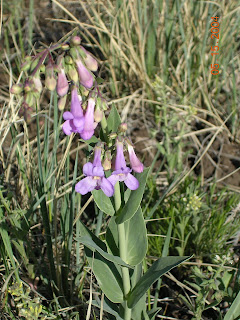The wildflowers are fading fast and all the critters on the
mountain are getting ready for winter.
There’s plenty of food in the grasses and seeds and some of the fruits
left on shrubs provide some color for the landscape.
Rose hips on the Wild Roses (Rosa woodsii) have turned bright red and will provide a nutritious
food source for the winter. They’re high in vitamin C and you can infuse them
to make a tea. With the reds and yellows
in their leaves, it makes for some bright red accents in the brown mountainside!
Chokecherries (Prunus
virginiana) are a big food source for birds. These shrubs have loads of white flowers in
the Spring which results in lots of dark purple berries in the late summer and
fall. They’re popular with the birds,
though, and can get stripped clean early in the winter. Chokecherries have been used in jams, but
they’re pretty tart. If you try one,
you’ll feel your mouth pucker up. Native
Americans combined the berries with dried buffalo meat to make pemmican, a
powerbar for their time—lots of energy and easy to keep.
The other berry you’ll see lots of this time of year is the
Snowberry. There are a couple varieties,
Symphoricarpos albus and S.
occidentallis. both small
shrubs. As the name implies these are
the round white berries you’ll see on small shrubs in shady areas of the
mountain. The flowers bloom all through
summer, so the berries can be found from July on. They aren’t so edible, however, being
described as “mildly toxic”. Although
deer browse on the shrubs, I won’t be making any berry pies from them, so enjoy
them for their looks!

















.JPG)































